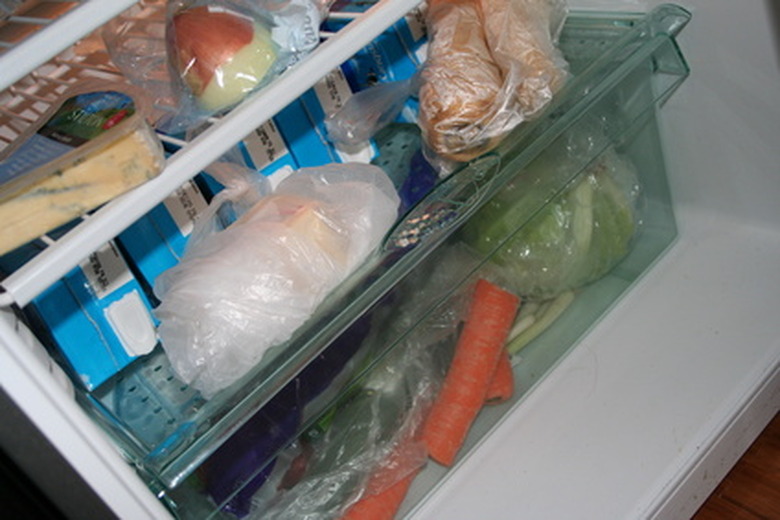How To Repair The Plastic In A Refrigerator
Things Needed
-
Concentrated dish washing detergent
-
Tooth brush
-
Cotton rags
-
Acrylic solvent cement
-
Squeeze bottle applicator
-
Scrap polycarbonate
-
400-grit sandpaper (optional)
The majority of refrigerator interiors are made from plastic. Plastic is a durable yet inexpensive material favored by manufacturers. However, even the strongest plastic will break over time. Finding replacement parts for older refrigerators can be time consuming and expensive. Many refrigerator manufacturers discontinue their models after a few years, making finding a replacement part extremely difficult. Use acrylic solvent cement and a few simple techniques to repair damaged plastic parts that would otherwise be difficult to replace.
Step 1
Remove the damaged part. The majority of parts that break are parts that can be easily removed from the refrigerator. If the part to be repaired cannot be removed from the refrigerator, empty the contents of the refrigerator. Do not use solvent cements in a refrigerator that contains any food products. If repairing damage on a part that cannot be removed, unplug the refrigerator as well.
Step 2
Wash the damaged area thoroughly with a mixture of four teaspoons of concentrated dish washing detergent to 16 ounces of hot water. Most damage to plastic refrigerator parts comes in the form of stress cracks. Use an old tooth brush to scrub out the crack and surrounding area. Dry with a cotton rag.
Step 3
Fill the squeeze bottle applicator to the half way point with acrylic solvent cement. While acrylic solvent cement was originally designed for bonding acrylic together, it works on the majority of plastics used for refrigerator parts. Using the thumb and index finger, squeeze the bottle's sides until the cement level rises toward the bottle's top. Slightly release the pressure and a vacuum is formed that will prevent the cement from spilling when the bottle in tipped.
Step 4
Apply a thin bead of solvent cement directly into the crack. Capillary action will pull the cement into the crack. Allow the cement to dry for 30 minutes and repeat the process. Solvent cement fuses the plastic together through a chemical reaction, creating an extremely strong bond. If the crack is large or needs reinforcement go to Step Five
Step 5
Cut a piece of scrap polycarbonate to cement over the crack. Use 1/16 inch thick polycarbonate, which can be cut with heavy scissors or a utility knife. Cut a piece large enough to cover the crack and at least a ½ inch around the crack. Apply solvent cement to the scrap polycarbonate, covering the scrap plastic's surface. Place the cemented side of the polycarbonate against the crack, allow 30 minutes drying time and the project is complete.
Tip
If the damaged area is coated with anything that cannot be washed off with soap and water, use 400-grit sandpaper to remove the debris. Solvent cement's effectiveness can be enhanced by sanding the area being bonded.


